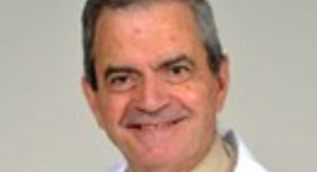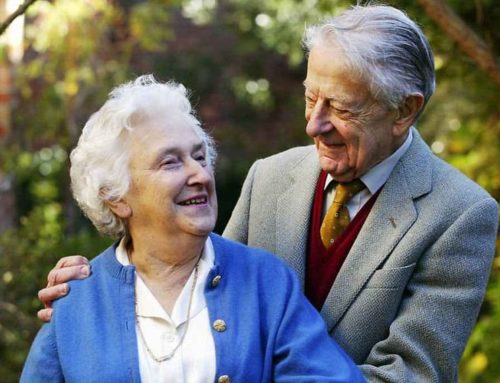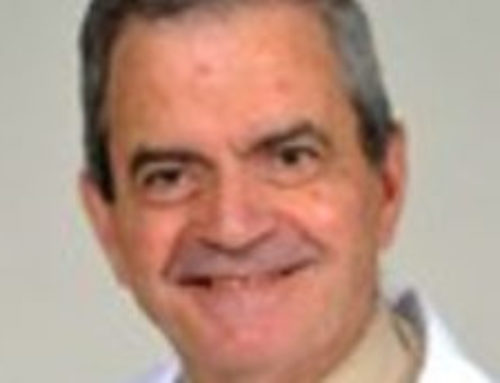Veterans Day, USA, 11 November 2024
Saint Martin of Tours & Saint Mercurius the Soldier
HUMANITARIAN SERVICE – COMBAT CASUALTY CARE
This year I have retired from clinical practice, ending a career that began at Georgetown Medical School, sixty years ago in 1964. A good friend and colleague recently wondered whether this milestone might serve as an occasion to recommend me for an upcoming Humanitarian Medical Award. My experience in the field of Combat Casualty Care would not typically be counted as a humanitarian enterprise. However, nowhere is there a more impressive instance of humanitarian care than the life-saving support that military doctors, medics and other health-care professionals provide to our severely wounded soldiers, sailors, marines and airmen. They serve heroically, often risking their own lives, to provide life-saving care for our critically injured troops, who have given their utmost to protect us and to preserve our freedom.
My introduction to Combat Casualty Care began in 1968 with my internship at Walter Reed Army Medical Center. It was during the massive Tet offensive in the Vietnam war. The combat was gruesome. Loss on the American side included 1,580 U.S. casualties (526 killed, 1,364 wounded.) Although Walter Reed was halfway around the world, because we had air dominance, we were safely receiving wounded soldiers. They were being air-evac’d here within less than a week of their injury. Many were seriously wounded and not all of them survived. Walter Reed was the destination for very many because the injured were air-transported to the medical center nearest their state-side family and home. We were one of only three such centers east of the Mississippi.
Sometimes a more delayed transfer would arrive with foul-smelling green pus exuding from his leg cast. A bad sign – It was “melioidosis,” a serious infection of Burkholderia pseudomallei (rare, but endemic to Southeast Asia). Other times, small, wiggling white worms – maggots – would be found crawling inside of the cast. A good sign – maggots only ate dead or infected tissue, leaving the wound efficiently debrided!
A life-changing experience for me occurred, late one night, when a planeload of newly-arrived wounded soldiers had been lined up in stretchers along the hallway. As an intern, it was my duty to expedite admission and disposition. One patient, while stable, had a significant cervical spine injury. The option for admission was between the orthopedics and neurosurgery services. Residents from both services arrived and engaged in an exchange, arguing over whose turn it was to admit this patient. In typical, albeit regrettable, resident banter, one resident was telling the other that it was his turn to take “this dump.” The patient was not awake, and I alone overheard the comment. Nevertheless, it entered my mind to hope that the soldier’s family (who were speeding here on their way from their home in Northern Virginia in order to be at the side of their badly wounded son) would never hear their son referred to as a “dump.” I thought to myself then, without ever realizing how much it would later affect my life, that I hoped that there might come a day when residents would argue for the privilege of providing best care for this wounded young man, who would go on to pay, for the rest of his life, this grim price of defending our liberty.
Years later, as a staff urologist at Letterman Army Medical Center in San Francisco, I would periodically volunteer my service as an instructor at the tri-service Combat Casualty Care Course (“C-4”) Task Force in San Antonio. Physicians, dentists and other military healthcare professionals from across the country, were flown there, 120 students at a time, every two weeks, coming from all three services. They would be required to spend a week in the foothills of South Texas, living in small tents (“under canvas”), in squads of 12 students each, in order to simulate the hands-on care that would be expected of them, if they were ever called upon to provide front-line medical support in time of combat. My role as a volunteer instructor was to just to spend the weekend, along with other instructors, providing these C4 students training in the Advanced Trauma Life Support (ATLS) course. They received this instruction at Fort Sam Houston, San Antonio, prior to heading out to the rough terrain of Camp Bullis, several miles to the North.
During one of these sessions, I spent a while chatting with the commander of the operation, who happened to be a fellow urologist. (Navy Captain Sam Steele). He said it was time for him to turn over the reins to a new commander. They were right then deciding upon a candidate. I asked him who he thought would do the best job. He surprised me by saying he thought it should be me! He strongly encouraged me to volunteer.The idea certainly caught me by surprise. But my thoughts turned back to that wounded soldier on a gurney in Walter Reed. Arriving back home, my wonderful wife advised me that, if I really felt called, she would not want me to spend the rest of my life wondering what I had missed. With her amazing support, we packed up, along with all of our six young kids, and headed for the Lone Star State. For 2 years, I was the commander of the C4 Task Force. Every 2 weeks, a new contingent of 120 students arrived. My first challenge was one of motivational speaking.
These students were not particularly enthusiastic about being pulled abruptly from their first-class medical centers in the midst of their training. My challenge was to convince them, “You need to be here!” Addressing the physicians, in particular, I reminded them that, at the core of their profession, is their lifetime commitment to trustworthiness. In combat, there could be no more cogent example of total trust being placed in your care than that which you receive from a soldier, when you are treating his wounded foxhole buddy. The bond in combat is intense. Picture in your mind a frontline soldier heading forward under withering fire, even when his squad leader has called for a retreat. The sergeant calls out to him, “Gavin, come back – We need to retreat!” “I can’t, Sarge. I’ve got to get to Private Ross.” “Gavin, Ross is dead!” “I know that, Sarge, but I promised him that I would never leave him behind here.” So great is the bond between fighting men under fire, that they would risk their own life to bring back the dead body of their comrade. Understanding this, imagine if you one day find yourself serving at a combat support hospital, when a field ambulance pulls up carrying a wounded soldier and his foxhole buddy. The companion soldier turns to you and says, “Please, Doc, I know he doesn’t look like much right now, but he’s my buddy and I promised him I would see that he gets good care. I’ve got to go back to the front now.” And then that soldier entrusts the care of his companion to you. The trust he places in you is a prize more greatly to be valued than any other. In this light, you are here now at C4 to learn more capably the combat medical skills you will need then.
More importantly, not only in combat, but throughout your entire career in medicine, you need to forever practice earning that sacred trust, which is placed in you every day by every patient you treat. You have made a lifetime profession to be, in the tradition of Hippocrates, a wise, compassionate, trustworthy physician.
After that, I would spend the remainder of the week with them at Camp Bullis – in field conditions, with the temperature often ranging from boiling heat to frigid cold – convincing them by my presence with them in the field, as well as by my words – “Yes, you do need to be here!” At the end of the course, despite all the privations, the students would give us a standing ovation. They were especially impressed by the active-duty Marines who served as a leader for each of the individual squads. While the students found field conditions challenging, the young Marines talked about how easy this duty was for them – real cots to lie on and canvas overhead!
Serving my tour as Commander of the C4 Task Force was a major milestone in my life. Looking back, I am so grateful for that chance moment of inspiration that had so captured my attention, standing by the stretcher of a wounded troop in Walter Reed. I would strongly encourage all physicians and other healthcare professionals to please give their serious consideration to volunteering in one of our Armed Forces – whether on active duty or reserve. Beyond that, whether in a civilian or military capacity, always be open to opportunities to serve others selflessly. Yes, please do be open, should a chance moment in life ever arise, to take a risk – to say “Yes!” on a dare – “To do something beautiful for God.” *
Dr. Richard Watson
Past President Catholic Medical Association USA
Addenda:
1) As part of my leadership role at C4, I served as the Chief Medical Officer on a MEDRETE (Medical Readiness Training Exercise) near Comayagua, Honduras. The operation provided a mutual benefit for both countries. From the US military standpoint, it was an excellent opportunity to exercise the deployment of a fully-activated medical unit in a tropical rural environment and actually provide (not just simulate) medical care. To learn what works and what could be better.
From the standpoint of people of Honduras, we were able to provide very welcome support – medical, dental and veterinarian. (The local people especially valued insights on how to better care for their livestock.) There were long lines of local people seeking evaluation and treatment. We took pains to insure integration of our outreach. We coordinated closely with Honduran health officials. We were careful to avoid the appearance of a touch-and-go photo op. We insured that the medications we provided were on the state medical formulary. Continuity of care was provided in follow-up by local healthcare professionals.
2) In recognition of my role at C4:
7/84-6/85 Director, Combat Casualty Care Course (C4)/Tri-Service Task Force, Fort Sam Houston, TX7/85-6/87 Commander, Joint Medical Readiness Training Center, Fort Sam Houston, TX.
I have also been awarded:
1985 National Defense Service Medical (w/OLC)1986 Order of Military Medical Merit1988 Department of Defense Superior Service Award1988 U.S. Army Meritorious Service Medal (w/OLC)1988 Air Force Organizational Excellence Award1989 Expert Field Medical Badge1989 Air Force Commendation Medal1993 Legion of Merit, Army2018 HackensackUMC Military Medal.
3) * Do Something Beautiful for God: The Essential Teachings of Mother Teresa, 365 Daily Reflections by Mother Teresa | Goodreads.
4) I was proud to nominate Pope Saint John XXIII for a Humanitarian Award from the Four Chaplains Legion of Honor. His Holiness’ qualifications for this award are extraordinary indeed. He had been drafted into the Italian Army in 1901, while still young, as soldier medic, and had reached the rank of Seargent. Later, in 1915, by then a priest, he returned to the Army, now as military hospital chaplain during WWI.
He wrote: “Humble priests, generously fulfilling their duty towards their motherland [patria], but still more aware of a higher duty towards the Church and souls, how many times did we lean over our dying younger brothers and listen to the anguished breathing of the nation, expressed in their passion and agony? It is impossible to say what the priestly heart felt in such moments. It often happened – permit me this personal memory – that I had to fall down on my knees and cry like a child, alone in my room, unable to contain the emotion that I felt at the simple and holy deaths of so many poor sons of our people – modest peasants …who died with the sacrament of Christ in their hearts and the name of Mary on their lips, not cursing their harsh fate, but joyfully offering the flower of their youth for God and their brethren.
As Pope John XXIII, he later drew on this personal experience in combat medicine in order to characterize the role of the Church as that of a spiritual field hospital.
“I see clearly that the thing the church needs most today is the ability to heal wounds and to warm the hearts of the faithful; it needs nearness, proximity. I see the church as a field hospital after battle. It is useless to ask a seriously injured person if he has high cholesterol and about the level of his blood sugars! You have to heal his wounds. Then we can talk about everything else. Heal the wounds, heal the wounds…. And you have to start from the ground up.”
https://www.americamagazine.org/faith/2013/09/30/big-heart-open-god-interview-pope-francis
I have authored an article in the Linacre Quarterly regarding Pope Saint John XXIII:Pope Saint John XXIII: Army Medic and Military Hospital ChaplainWatson RA. Linacre Quarterly Volume: 83 issue: 2, page(s): 142-143, May 2016
https://journals.sagepub.com/doi/full/10.1080/00243639.2015.1133512 and https://journals.sagepub.com/doi/full/10.1080/00243639.2016.1215123
5) Most importantly, I must pay tribute to my wonderful wife, Leonie S. Watson, MD, herself a veteran of the Army Medical Corps, who took years away from her practice as a skilled and enthusiastic Family Medicine Practitioner – one of the first in our nation – in order to provide incredible care, as a model Mom for our children and as an amazing wife – while I was away, treading the hill country of south Texas in combat boots. Leonie passed away a year ago. How I do miss her!










